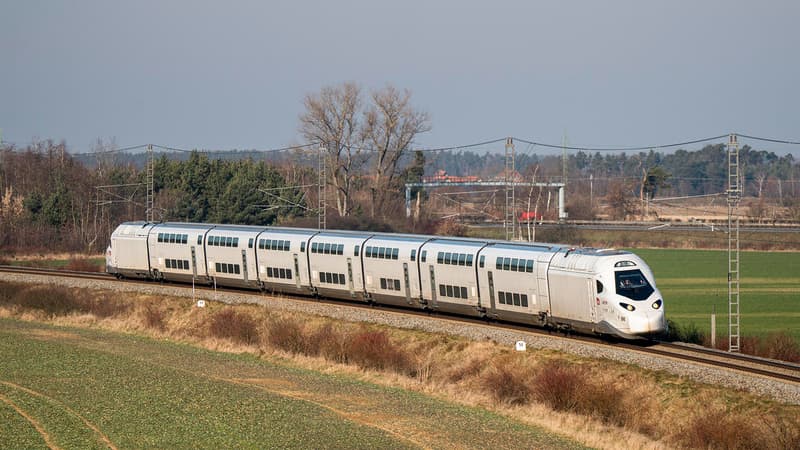The new TGV M, which should start running in France at the end of 2024 on the south-eastern network, continues its series of large-scale tests successfully.
The first test train of this fifth generation TGV joined the Velim test site in the Czech Republic last December for a six-month campaign on a dedicated closed circuit. A campaign that is accelerating since, for the first time, this 5th generation of TGV has traveled at high speed.
What are these tests?
“The objectives are to validate the global operation of the train, eliminate the risks that appeared during the design phase in relation to the regulatory requirements and adjust the digital modeling accordingly. This phase takes place at speeds that reach 200 km/h”, explains the SNCF, while the previous tests in France this time were carried out at a speed of 30 km/h.
Thus, upon arrival at Velim, the TGV M began its tests and a gradual increase in speed, up to 200 km/h. “It was carried out successfully in less than a week. A very short time, well below forecasts”, underlines the operator.
Functional set-up tests have also started: braking with no load and with load, pantograph tests, signaling tests (communication between the train and the ground infrastructure)… “Still in progress, this key sequence has as with the objective of guaranteeing compliance with the safety requirements of railway operations”, continues the SNCF.
This is an important step towards the “certification” of this new TGV manufactured by Alstom and ordered in 115 copies by the SNCF.
The next step will be to reproduce the configurations and contexts that the train may encounter throughout the life of the train (degraded modes, weather conditions), singular points of the network.
These new tests will be carried out on the national network, with traffic up to 320 km/h by an accredited body. The tests will then allow obtaining the Marketing Authorization issued by the ERA (European Railway Agency).
climatic tests
Another engine dedicated to climate testing will leave Alstom’s La Rochelle site in mid-February to join the Vienna site in Austria for climate tests “crucial in the context of the ongoing global warming/disruption.” This will involve, for example, testing the resistance of the train against 160 km/h winds or massive insolation.
Then, for a long period before the start of commercial operation, several trains will run on the national network in the spring to test the reliability of the train under real operating conditions.
All functions will be tested, in particular those related to passenger comfort. These tests will also be an opportunity for drivers and skippers to become familiar with this new train.
At the end of all these tests, the TGV M will have benefited from 350 weeks of accumulated tests and will have covered more than a million kilometers before the first customer boards at the end of 2024 if all goes well to reach Lyon. Marseille or Nice.
TGV M: modular and economical
The TGV M is not a revised and corrected classic TGV, but a new train. The manufacturer Alstom started from a blank page at all levels.
The letter “M” first means modularity, with the possibility of adjusting the number of cars on demand as close as possible to the needs of the market.
This train offers 20% more capacity, that is, a maximum of 740 seats instead of the 634 of a conventional train through an additional car (9 instead of 8) mainly thanks to a much more compact motor car than previous generations. But this TGV will be able to circulate with 7, 8 or 9 cars, which is a novelty.
The SNCF also highlights the energy sobriety of this new TGV. Its new design, which contrasts with existing models with a nose lengthened by 2.6 meters for greater aerodynamics, should allow future trains to save 20% energy and emit 32% less CO2, Alstom promises.
Source: BFM TV


